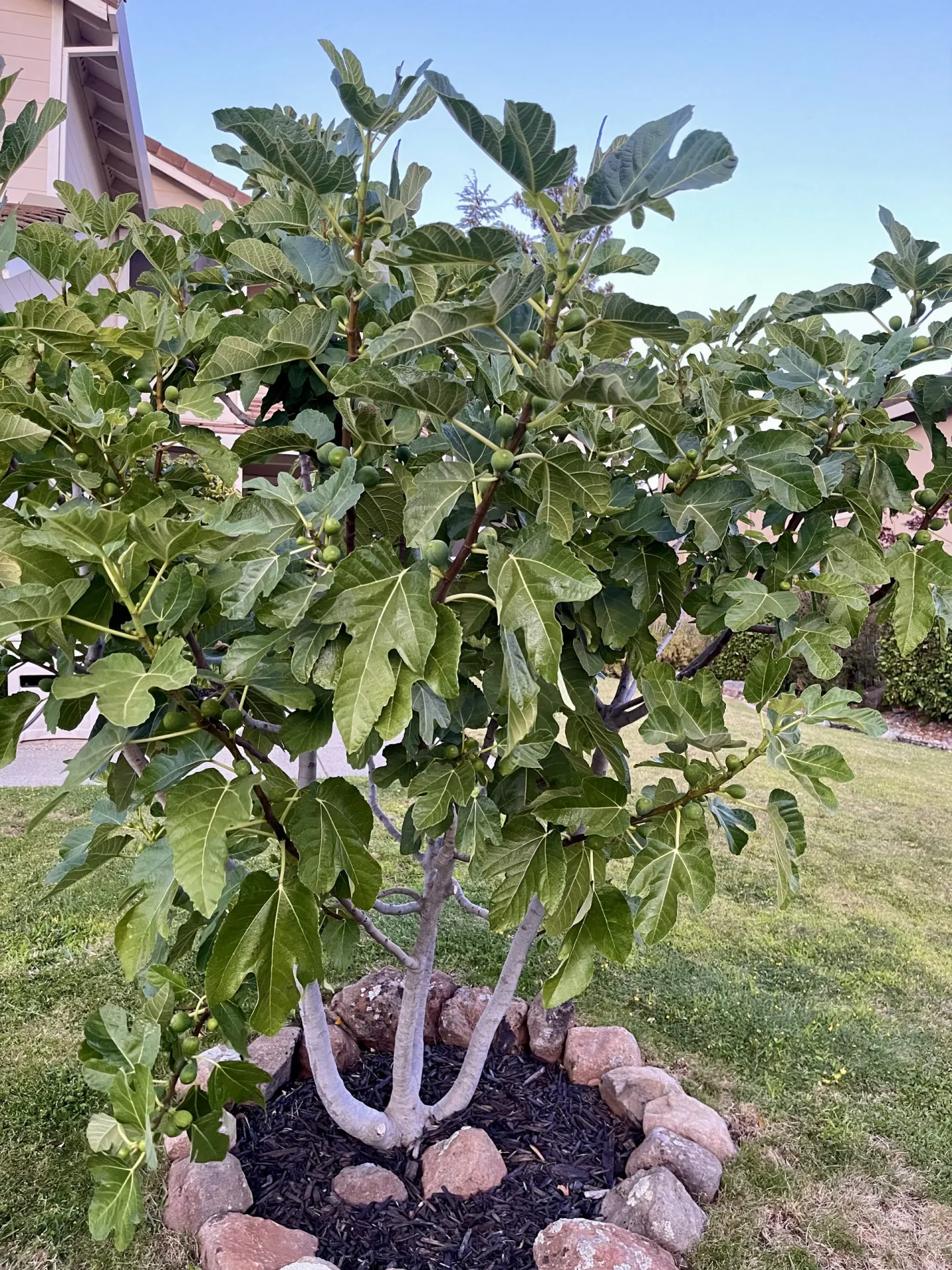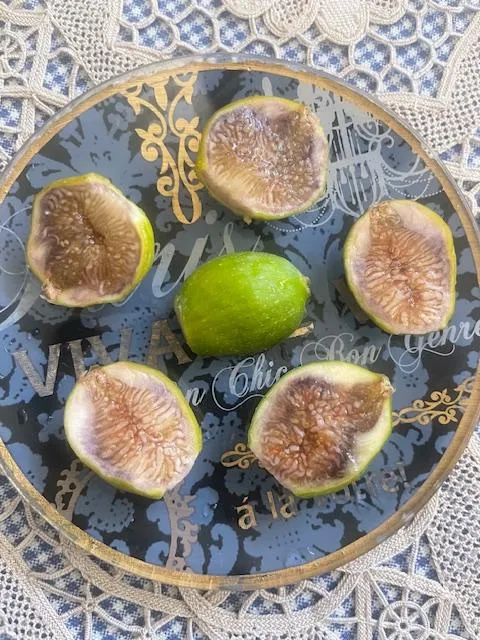Blog by Cindy Yee
Many years ago, my father planted a purple fig (Ficus carica) cutting from a neighbor in his backyard. He did not know the name - my guess is Black Madeira, but I'm not a fig expert. Thirty years later, the tree is still doing great. Our daughter and son-in-law live there now, and keep us supplied with big, beautiful, luscious figs in season. It's a wonderful reminder of my Dad and his green thumb.
Some years ago, we cut down a tree in our front yard planted by the developer, which eventually tilted over our driveway. I decided to plant a green fig directly in its place. The tree removal company only ground the stump down maybe 18 inches, and I did worry that the fig roots would not be happy. Thankfully, this did not appear to be an issue. A green fig was chosen because we already get to eat excellent purple figs, and also to try and avoid too much fruit loss from snacking birds. Supposedly, the ripened yellow-green color would fool them.

Peter's honey fig was introduced by Peter Danna of Oregon, brought over from his hometown in Sicily. I chose this fig because the description included the words prolific, honey-sweet, and heat-tolerant.
It took 3 years for our new Peter's honey fig to put out a couple of tiny figs. They were very dry and tasteless, and I did wonder what my mistake was. However, it appears to be just normal issues of a young fig tree. It is now 5 or 6 years old, and I am happy to say it finally has a lot of figs. The fruit is still small, but I hope that its size will increase to the standard variety (medium) as the tree matures. This year, I fertilized it three separate times and have also been regularly supplementing with diluted fish fertilizer. Its location on the lawn is not ideal because of frequent shallow sprinkler watering. The tree also gets extra water during the hot summer.
The first picture below shows the whole tree, which is more like a 4-pronged bush as intended (the 4th stem being directly behind the middle one). There is a slight slope, and the idea was to avoid having to use a tall ladder to pick the fruit. I think the form looks pretty good. After taking the picture, the 2 rocks were pushed further away from the base, to avoid burning stems on super hot days.
This tree produced a tiny breba crop, followed by the bigger current one, which should start ripening in August or thereabouts. I am trying not to test the bird theory (they know their fruits and are not stupid) and bought gauze bags online that are the same color as the figs, since this is in the front yard. Their flavor has improved compared to 2-3 years ago - the few brebas were honey-sweet and juicy. My last picture shows the rich, honey amber color of a cross-section.

Perhaps this winter, a project will be grafting a cutting or two of Dad's purple fig onto the green fig. That's a thought!
Cheers and Happy Gardening!

